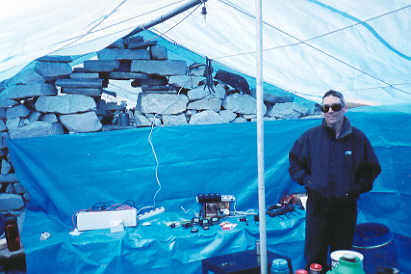Expedition Update
|
May
9th Tom called via satellite phone today to let us know that he and the team have just arrived back at Everest Base Camp from their rest days down in the beautiful village of Deboche (12,370ft.). The team continues to enjoy good health, fitness, and acclimatization. He reported that they hiked from Lobuche (16,463ft.) to base camp (17,598ft.) in just over two hours. During our initial trek to base camp in March, it took us almost an entire day to cover this distance ! Right now our team, as all the others there, are simply waiting for better weather on Everest's upper reaches so they can make their summit bid. To do so right now would be much too dangerous because of the high winds, resulting poor visibility with blowing snow, and extreme wind chill factors. As the teams keep an eye on the changing weather on Mt. Everest, you can do the same (see suggested links on the right side of this page). As for the local scene there at Everest Base Camp, Tom reports that Dr. Luanne Freer, one of the volunteer doctors running the Himalayan Rescue Association clinic there, will be heading back to the US (Montana) next week. I know that everyone there will be sorry to see her go, but luckily another doctor is arriving to replace her (and help Dr. Denise Merritt, who remains there). You can find more info about this wonderful group of people at basecampmd.com. --Linda McMillan |
While waiting out the bad weather, the team can stay in shape by hiking up smaller peaks in the area. Here Tom is headed up the grassy lower slopes of Pumori, across the valley from base camp. |



